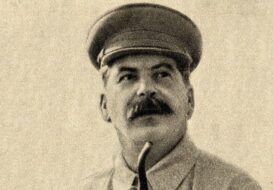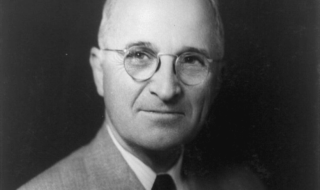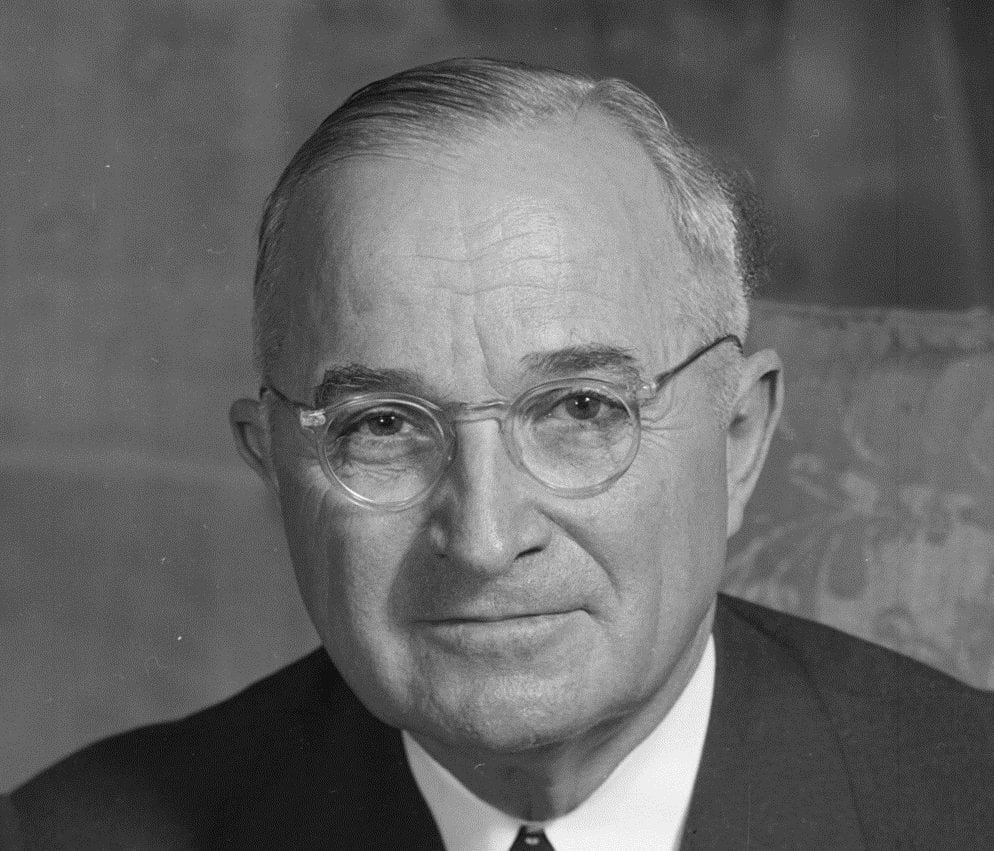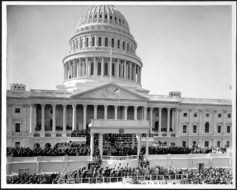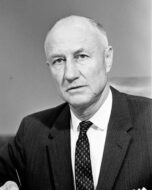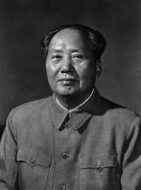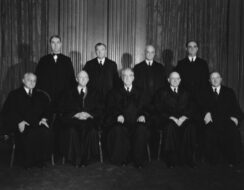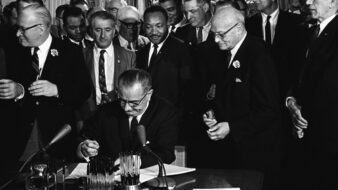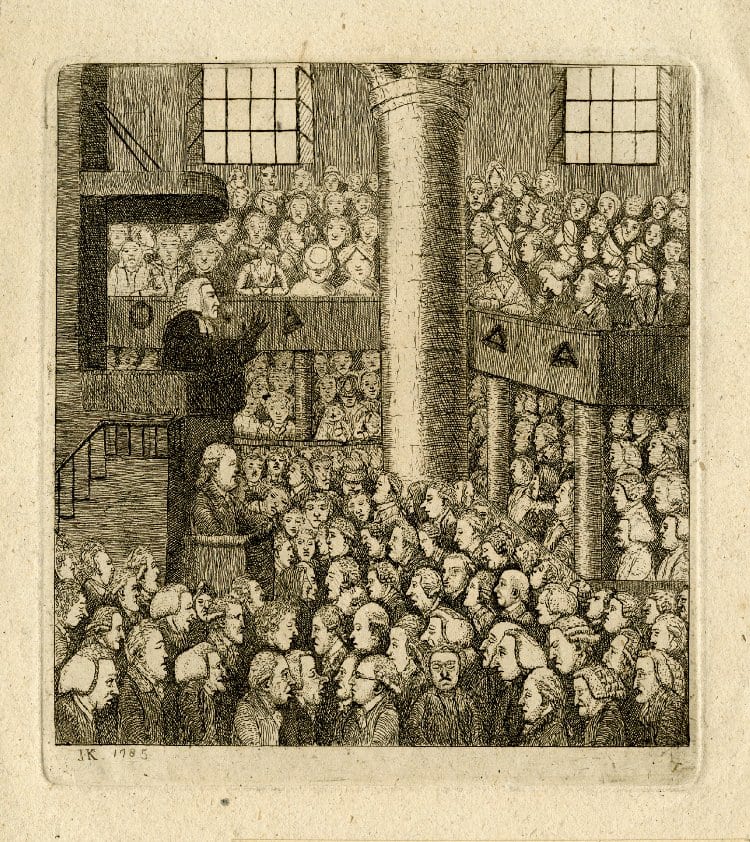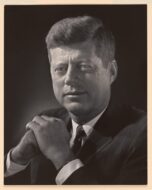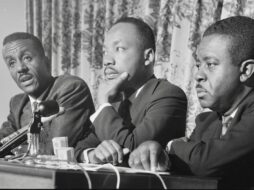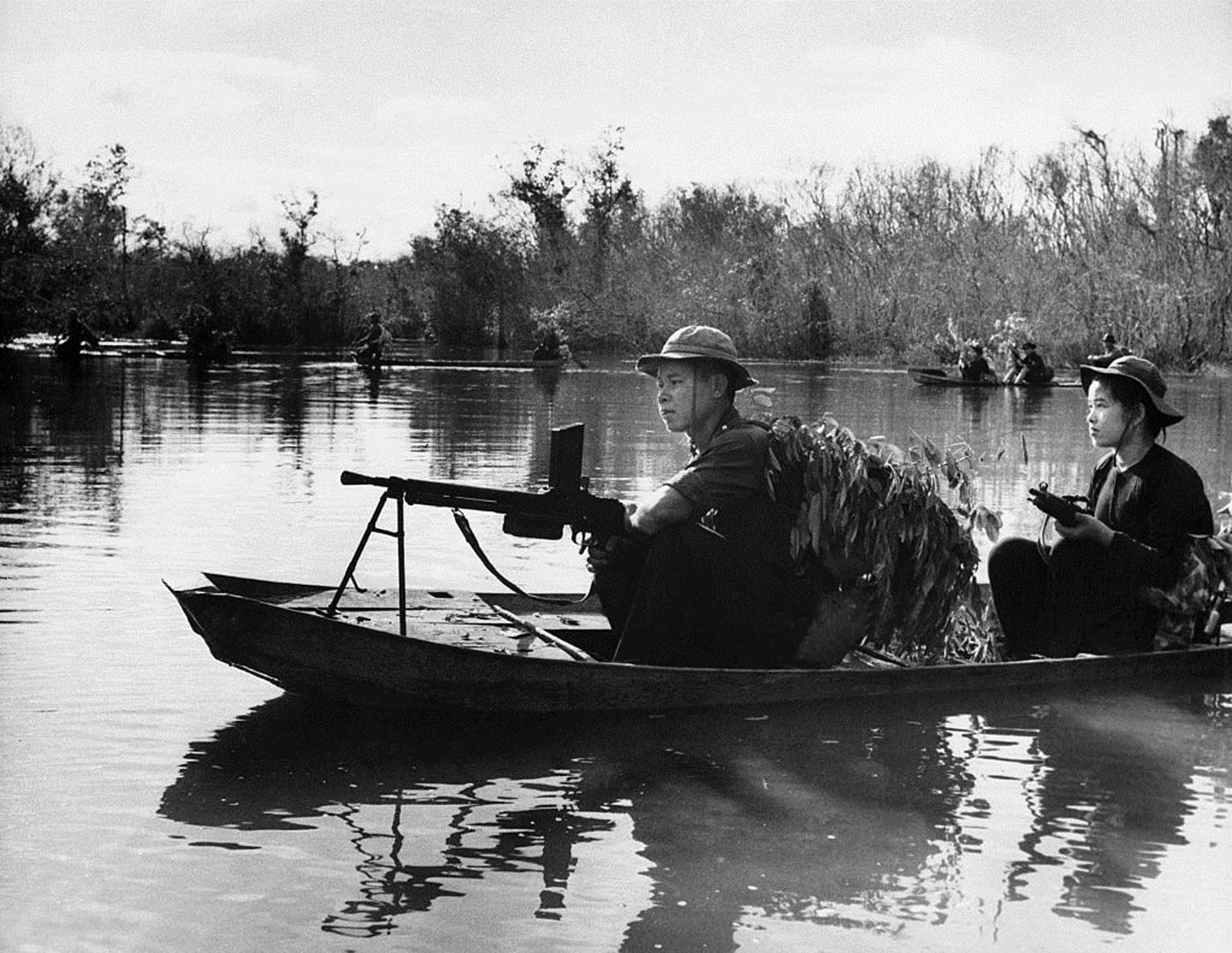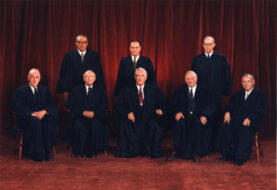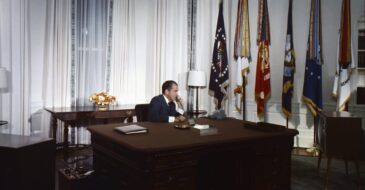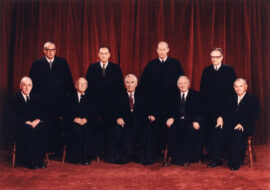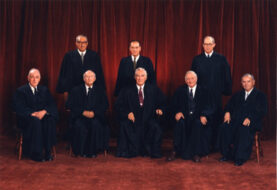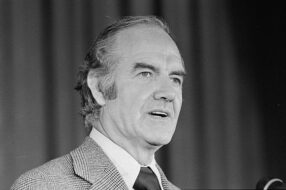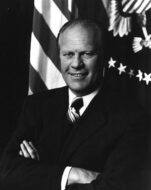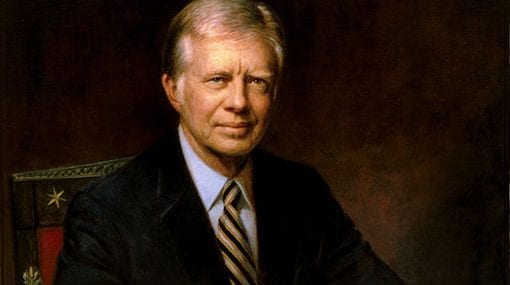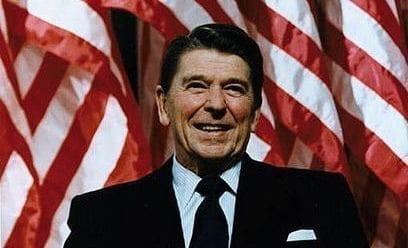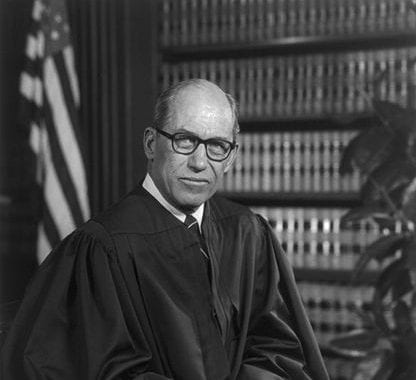
Introduction
Ronald Reagan ran for president in 1980 promising to increase defense spending. He was elected in part because the Soviet invasion of Afghanistan (See Carter), Cuban operations in Africa, the seizure of the American Embassy in Tehran (November 1979), and the subsequent holding of American diplomats as hostages convinced at least some voters that America had become dangerously weak. A long-time critic of détente (See “Joint Statement Following Discussions with Leaders of the People’s Republic of China“), Reagan came into office hoping to end the Cold War with a victory for the United States by peacefully causing the collapse of communism in Eastern Europe and even in the Soviet Union. A key element of his strategy was a military buildup, undertaken, as he explained in this speech, because, as the example of World War II showed, weakness encouraged war.
Reagan recounted (in passages omitted from this excerpt) evidence of increases in the quantity and quality of Soviet weapons. He also used photographs to illustrate the results of aggressive Soviet actions close to America, including a large Soviet intelligence-gathering facility in Cuba, Soviet military equipment in Nicaragua, and a large Cuban-built airfield on the Caribbean island of Grenada. Reagan then turned to his primary topic – encouraging support for his administration’s defense plans and spending. An important departure in these plans was an expensive and experimental defensive weapons project known as the Strategic Defense Initiative (often also called “Star Wars” after the popular 1978 film of the same name). The SDI was a plan to build a network of space- and earth-based lasers with the capability to target intercontinental ballistic missiles (ICBMs) fired at the United States. Reagan presented this initiative as a decisive break with the long-standing Cold War deterrence strategy of mutually assured destruction, in which each side possessing nuclear weapons was assured or secured by the knowledge that any use of nuclear weapons would lead to the destruction of the country that used them. In theory, this mutually assured destruction meant nuclear weapons would never be used. Reagan believed that rendering nuclear weapons unusable through an effective defense against them was a surer way of putting an end to the possibility of nuclear war.
Reagan succeeded in obtaining Congressional funding for SDI, but the system was not completed during his presidency. Research and development continued leading to the development of some anti-missile weapons, but as yet an operable SDI has not been built.
Source: Public Papers of the Presidents of the United States: Ronald Reagan, 1983, Book I (Washington, D.C.: U.S. Government Printing Office, 1984), 437–43. Available online from Gerhard Peters and John T. Woolley, The American Presidency Project. https://goo.gl/2uDvaG.
My fellow Americans, thank you for sharing your time with me tonight.
The subject I want to discuss with you, peace and national security, is both timely and important. Timely, because I’ve reached a decision which offers a new hope for our children in the 21st century, a decision I’ll tell you about in a few minutes. And important because there’s a very big decision that you must make for yourselves. This subject involves the most basic duty that any President and any people share, the duty to protect and strengthen the peace.
. . .
The budget request that is now before the Congress has been trimmed to the limits of safety. Further deep cuts cannot be made without seriously endangering the security of the Nation. The choice is up to the men and women you’ve elected to the Congress, and that means the choice is up to you.
Tonight, I want to explain to you what this defense debate is all about and why I’m convinced that the budget now before the Congress is necessary, responsible, and deserving of your support. And I want to offer hope for the future.
But first, let me say what the defense debate is not about. It is not about spending arithmetic. . . .
What seems to have been lost in all this debate is the simple truth of how a defense budget is arrived at. It isn’t done by deciding to spend a certain number of dollars. . . .
There is no logical way that you can say, let’s spend x billion dollars less. You can only say, which part of our defense measures do we believe we can do without and still have security against all contingencies? . . .
The defense policy of the United States is based on a simple premise: The United States does not start fights. We will never be an aggressor. We maintain our strength in order to deter and defend against aggression-to preserve freedom and peace. . . .
This strategy of deterrence has not changed. It still works. But what it takes to maintain deterrence has changed. It took one kind of military force to deter an attack when we had far more nuclear weapons than any other power; it takes another kind now that the Soviets, for example, have enough accurate and powerful nuclear weapons to destroy virtually all of our missiles on the ground. Now, this is not to say that the Soviet Union is planning to make war on us. Nor do I believe a war is inevitable – quite the contrary. But what must be recognized is that our security is based on being prepared to meet all threats.
. . .
The calls for cutting back the defense budget come in nice, simple arithmetic. They’re the same kind of talk that led the democracies to neglect their defenses in the 1930’s and invited the tragedy of World War II. We must not let that grim chapter of history repeat itself through apathy or neglect.
This is why I’m speaking to you tonight – to urge you to tell your Senators and Congressmen that you know we must continue to restore our military strength. If we stop in midstream, we will send a signal of decline, of lessened will, to friends and adversaries alike. Free people must voluntarily, through open debate and democratic means, meet the challenge that totalitarians pose by compulsion. It’s up to us, in our time, to choose and choose wisely between the hard but necessary task of preserving peace and freedom and the temptation to ignore our duty and blindly hope for the best while the enemies of freedom grow stronger day by day.
The solution is well within our grasp. But to reach it, there is simply no alternative but to continue this year, in this budget, to provide the resources we need to preserve the peace and guarantee our freedom.
Now, thus far tonight I’ve shared with you my thoughts on the problems of national security we must face together. My predecessors in the Oval Office have appeared before you on other occasions to describe the threat posed by Soviet power and have proposed steps to address that threat. But since the advent of nuclear weapons, those steps have been increasingly directed toward deterrence of aggression through the promise of retaliation.
This approach to stability through offensive threat has worked. We and our allies have succeeded in preventing nuclear war for more than three decades. In recent months, however, my advisers, including in particular the Joint Chiefs of Staff, have underscored the necessity to break out of a future that relies solely on offensive retaliation for our security.
Over the course of these discussions, I’ve become more and more deeply convinced that the human spirit must be capable of rising above dealing with other nations and human beings by threatening their existence. Feeling this way, I believe we must thoroughly examine every opportunity for reducing tensions and for introducing greater stability into the strategic calculus on both sides.
One of the most important contributions we can make is, of course, to lower the level of all arms, and particularly nuclear arms. We’re engaged right now in several negotiations with the Soviet Union to bring about a mutual reduction of weapons. I will report to you a week from tomorrow my thoughts on that score. But let me just say, I’m totally committed to this course.
If the Soviet Union will join with us in our effort to achieve major arms reduction, we will have succeeded in stabilizing the nuclear balance. Nevertheless, it will still be necessary to rely on the specter of retaliation, on mutual threat. And that’s a sad commentary on the human condition. Wouldn’t it be better to save lives than to avenge them? Are we not capable of demonstrating our peaceful intentions by applying all our abilities and our ingenuity to achieving a truly lasting stability? I think we are. Indeed, we must.
After careful consultation with my advisers, including the Joint Chiefs of Staff, I believe there is a way. Let me share with you a vision of the future which offers hope. It is that we embark on a program to counter the awesome Soviet missile threat with measures that are defensive. Let us turn to the very strengths in technology that spawned our great industrial base and that have given us the quality of life we enjoy today.
What if free people could live secure in the knowledge that their security did not rest upon the threat of instant U.S. retaliation to deter a Soviet attack, that we could intercept and destroy strategic ballistic missiles before they reached our own soil or that of our allies?
I know this is a formidable, technical task, one that may not be accomplished before the end of this century.
Yet, current technology has attained a level of sophistication where it’s reasonable for us to begin this effort. It will take years, probably decades of effort on many fronts. There will be failures and setbacks, just as there will be successes and breakthroughs. And as we proceed, we must remain constant in preserving the nuclear deterrent and maintaining a solid capability for flexible response. But isn’t it worth every investment necessary to free the world from the threat of nuclear war? We know it is.
In the meantime, we will continue to pursue real reductions in nuclear arms, negotiating from a position of strength that can be ensured only by modernizing our strategic forces. At the same time, we must take steps to reduce the risk of a conventional military conflict escalating to nuclear war by improving our nonnuclear capabilities.
America does possess – now – the technologies to attain very significant improvements in the effectiveness of our conventional, nonnuclear forces. Proceeding boldly with these new technologies, we can significantly reduce any incentive that the Soviet Union may have to threaten attack against the United States or its allies.
As we pursue our goal of defensive technologies, we recognize that our allies rely upon our strategic offensive power to deter attacks against them. Their vital interests and ours are inextricably linked. Their safety and ours are one. And no change in technology can or will alter that reality. We must and shall continue to honor our commitments.
I clearly recognize that defensive systems have limitations and raise certain problems and ambiguities. If paired with offensive systems, they can be viewed as fostering an aggressive policy, and no one wants that. But with these considerations firmly in mind, I call upon the scientific community in our country, those who gave us nuclear weapons, to turn their great talents now to the cause of mankind and world peace, to give us the means of rendering these nuclear weapons impotent and obsolete.
Tonight, consistent with our obligations of the ABM treaty1 and recognizing the need for closer consultation with our allies, I’m taking an important first step. I am directing a comprehensive and intensive effort to define a long-term research and development program to begin to achieve our ultimate goal of eliminating the threat posed by strategic nuclear missiles. This could pave the way for arms control measures to eliminate the weapons themselves. We seek neither military superiority nor political advantage. Our only purpose – one all people share – is to search for ways to reduce the danger of nuclear war.
My fellow Americans, tonight we’re launching an effort which holds the promise of changing the course of human history. There will be risks, and results take time. But I believe we can do it. As we cross this threshold, I ask for your prayers and your support.
- 1. The Anti-Ballistic Missile Treaty (1972–2002) between the United States and the Soviet Union limited what each party could do to defend against ballistic missiles.

Conversation-based seminars for collegial PD, one-day and multi-day seminars, graduate credit seminars (MA degree), online and in-person.




